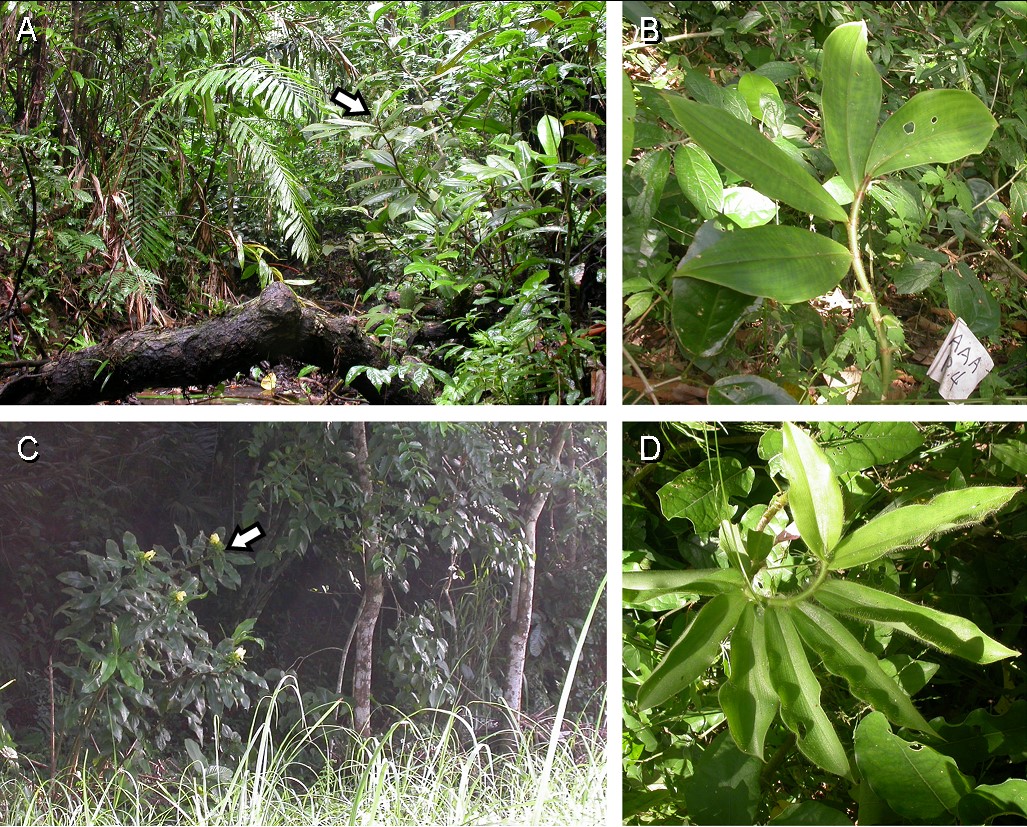
Ecological Archives E096-045-A1
Grace F. Chen and Douglas W. Schemske. 2015. Ecological differentiation and local adaptation in two sister species of Neotropical Costus (Costaceae). Ecology 96:440–449. http://dx.doi.org/10.1890/14-0428.1
Appendix A. Supplemental descriptions of Costus allenii, C. villosissimus, and their hybrids.
Fig. A1. Natural habitats and morphology of Costus plants. (A) Costus allenii (indicated by the arrow) growing in a ravine in the rainforest understory. (B) Costus allenii juvenile with broad leaves covered in brownish trichomes. (C) Costus villosissimus (indicated by the arrow) located on the edge of the forest next to grassland. (D) Costus villosissimus juvenile with narrow leaves covered in white trichomes.
Costus allenii has broad leaves, brownish trichomes, red rings at the tips of leaf sheaths, large extrafloral nectaries, rounded bracts, and small, cream-colored flowers with red stripes, while C. villosissimus has narrow leaves, white trichomes, no red rings at the tips of leaf sheaths, small extrafloral nectaries, leafy bracts, and large, yellow flowers (Mass 1972; Fig. A1).
Flowering hybrids can be easily distinguished from the parental species by their large yellow flowers with red stripes, while non-flowering hybrids can be identified by their narrow leaves with brownish hairs and red ring or broad leaves with white hairs but no red ring. The morphological characteristics of these hybrids were consistent with observation of F1s in the greenhouse.
Literature cited
Maas, P. J. M. 1972. Costoideae (Zingiberaceae). Flora Neotropica, monograph 8. Hafner, New York, New York, USA.